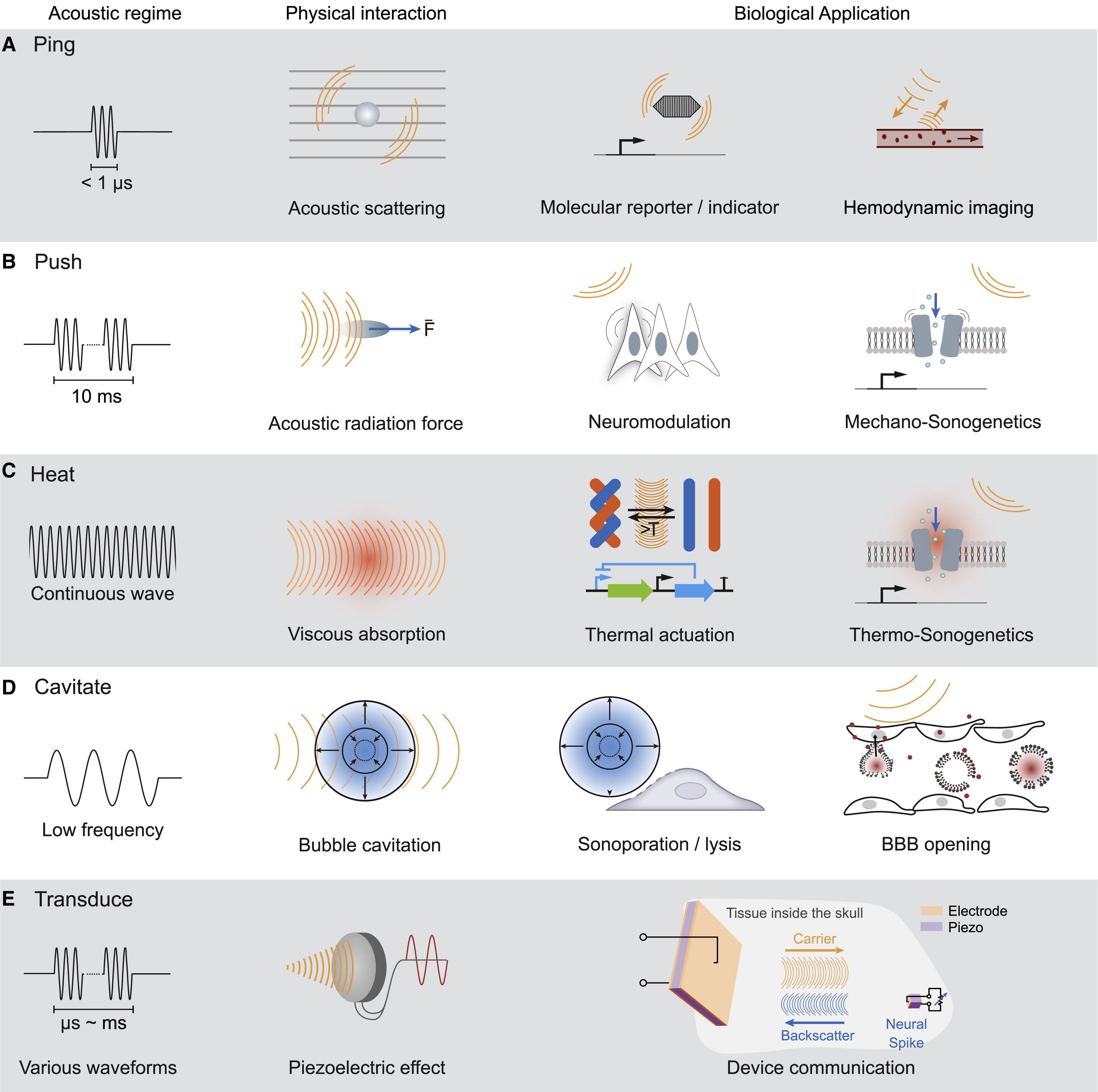Ultrasound Technologies for Imaging and Modulating Neural Activity

Abstract
Visualizing and perturbing neural activity on a brain-wide scale in model animals and humans is a major goal of neuroscience technology development. Established electrical and optical techniques typically break down at this scale due to inherent physical limitations. In contrast, ultrasound readily permeates the brain, and in some cases the skull, and interacts with tissue with a fundamental resolution on the order of 100 μm and 1 ms. This basic ability has motivated major efforts to harness ultrasound as a modality for large-scale brain imaging and modulation. These efforts have resulted in already-useful neuroscience tools, including high-resolution hemodynamic functional imaging, focused ultrasound neuromodulation, and local drug delivery. Furthermore, recent breakthroughs promise to connect ultrasound to neurons at the genetic level for biomolecular imaging and sonogenetic control. In this article, we review the state of the art and ongoing developments in ultrasonic neurotechnology, building from fundamental principles to current utility, open questions, and future potential.